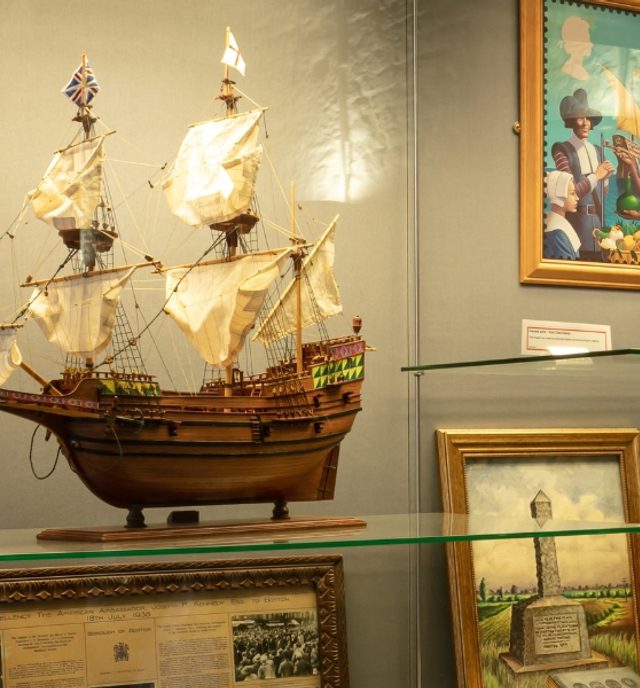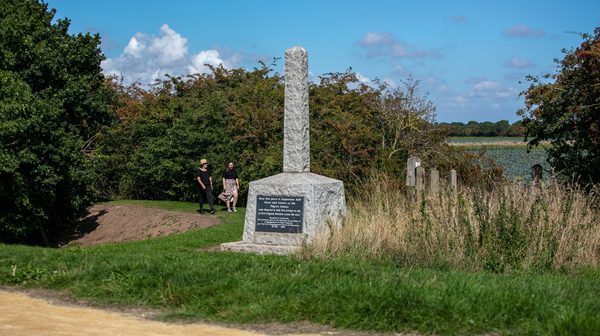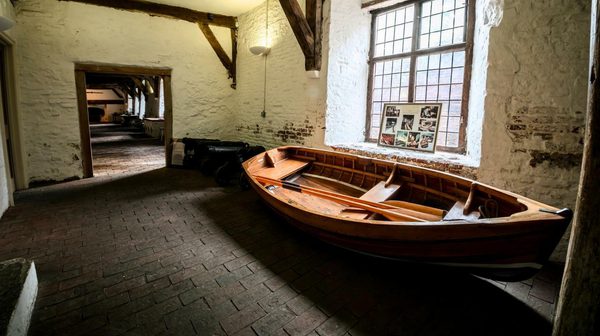A guide to the Mayflower Pilgrims of Boston
The Mayflower Pilgrims are fundamental to the cultural history of Boston. Discover their fascinating story and cultural connections to the town of Boston.

The Mayflower Pilgrims
The Mayflower Pilgrims are an important part of Boston’s rich cultural history and with international ties to the founding fathers of the new world, it’s no wonder the Lincolnshire port town attracts interest from across the world.
Many people will be familiar with the story of the Mayflower’s voyage to America in 1620, but Boston’s involvement in the journey of the Mayflower Pilgrims begins much earlier on an autumn night in 1607.
At the time, Boston was a thriving port town with large import and export markets with mainland Europe. The town’s location at the mouth of The Wash, at the edge of Lincolnshire’s coastline, made access for seabound vessels relatively easy along The Haven, out of the town and to the North Sea.

The story begins...
One night in 1607, a passionate and determined group of men, women and children secretly met a boat on the edge of the Wash at Scotia Creek, Fishtoft, along the Haven. This group of separatists planned to defy the authority of the English church and escape across the North Sea to Holland to live in religious freedom. At the point of reaching Scotia Creek, they had travelled over 60 miles by foot from Scrooby, near Gainsborough, and were hoping for a new life.
They had arranged to
travel with the captain of an outbound ship due for Holland. With freedom
finally in sight, they boarded the ship to set sail out of Boston. Moments
after embarking on their journey, the boat’s captain betrayed the group of
puritans and alerted the local militia who intercepted the vessel at Scotia
Creek, only a few miles out of Boston. The group were arrested and pillaged of
their personal possessions, money, and books. Stripped of their belongings and
hope, the group were brought by boat back along the Haven to Boston and
imprisoned at the Guildhall, home to the local law court and cells.

The Mayflower
After a month of imprisonment in Boston Guildhall, most were sent back “from whence they came”, but seven ringleaders were ordered to the higher Assizes court of Lincoln. The following year, the group made another attempt to escape England, leaving from Immingham, North Lincolnshire. This time they successfully reached Holland and lived briefly in Amsterdam before moving to Leiden.
Perhaps most famously, 13 years after trying to escape from Boston, a group of these original men and women sailed back to England and then on to America to become the Founding Fathers. These ‘Pilgrims’ set sail on the Mayflower in 1620 for a completely new life in Plymouth, Massachusetts.
The Pilgrim Fathers Memorial
To commemorate their dedicated efforts of religious freedom, The Mayflower Pilgrim's Memorial was erected at the site of Scotia Creek, now incorporated into the natural beauty of Havenside Country Park, and built to acknowledge the 350th anniversary of the separatists’ attempt at freedom and unfortunate capture.

The Reverend John Cotton and Boston's American Legacy
In 1612, The Reverend John Cotton was appointed vicar at St Botolph’s Church. He was a passionate man of character who challenged the church with his beliefs and teachings. He wished to change the church from within and was known as a ‘Puritan’; seeking to purify and improve practises from a recently reformed church.
The Rev Cotton was a hugely popular character, and people travelled from far and wide to hear his sermons which sometimes lasted as long as five hours. His unorthodox practice caused him to be unpopular with the church authorities and was frequently reprimanded for sharing beliefs that did not align with those of the church. Unable to affect their traditional views, he instead inspired members of his congregation to seek a new life in America. Between 1630 and 1634, roughly ten percent of Boston’s population left for a new life abroad. This group included many educated and powerful residents who helped shape the colony in America that they founded in 1630.
Members of this newly established American congregation became Governors of the new city. The first American school, the Latin Free School, was based on Boston Grammar School; this school would eventually evolve into Harvard University. And the name of this new city? Boston, in honour of the town they had known, loved and left behind.
Bring Boston’s fascinating stories to life with a visit to the historic port town, and walk in the footsteps of the Mayflower Pilgrims, with a comprehensive guided history tour of the town.

Discover more of Boston's history
Article Tags:
Share this article:
Search Articles
Keywords



